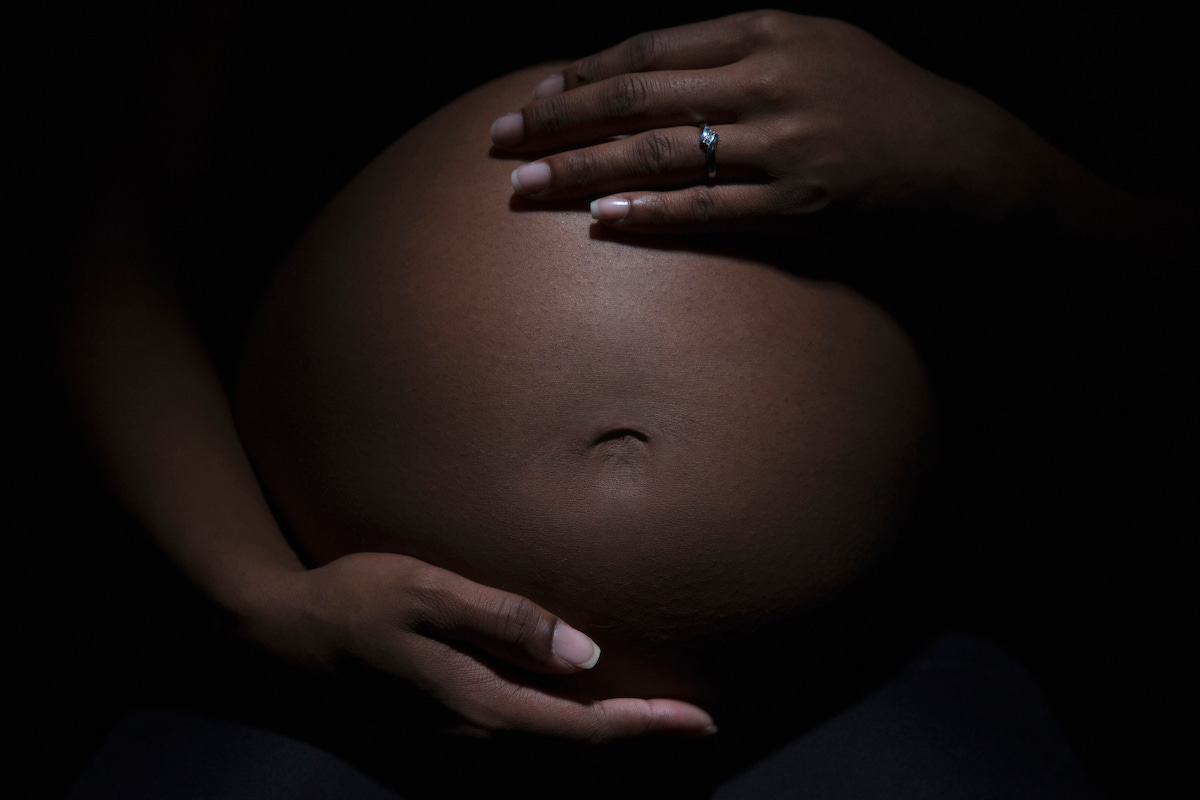I’ll acknowledge up front: this is an area I have done research on, but it’s not one I speak to from personal experience. This is why it feels so important to have other voices here who can speak to that experience. With my research hat on, though, I hope I can try to lay out what it means — in numerical terms — to say there is a crisis in Black maternal health.
Laying out data doesn’t provide answers, but with a better understanding of the problem, we can start to look for solutions, for policy and through an individual lens.
I will caution here: some of this is scary, and you know that is never my intention. The risks we are talking about here are still very small, even as they are larger than they should be. But if this is not the moment for you to read this, please take care of yourself and come back to it another time.
Definitions and data
I will start by getting us on the same page about what we mean when we talk about maternal mortality, since there are several ways to measure it. The World Health Organization definition, which the U.S. uses in calculating the headline maternal mortality numbers, is “death of a woman while pregnant or within 42 days of termination of pregnancy, irrespective of the duration and the site of the pregnancy, from any cause related to or aggravated by the pregnancy or its management, but not from accidental or incidental causes.”
The two key components of this are the timing (during pregnancy or within 42 days of the end of pregnancy) and the exclusion of accidental or incidental causes. For the U.S., these data are produced based on comprehensive records of all U.S. deaths.
There are several other data sources that can be used to better understand these issues. The Pregnancy Mortality Surveillance System is a CDC-based surveillance system that uses death certificate information to further understand maternal deaths. These data include the possibility of deaths up to one year postpartum reflecting pregnancy-related mortality. There is also data from CDC Maternal Mortality Review Committees that can provide further detailed information at the state or local level about the causes of maternal mortality.
Maternal mortality rate in the U.S.
Recently, the CDC released data on maternal mortality in 2021. It reports these rates across racial groups and age groups; I’ve graphed them below. Again — to be clear, we are talking about rare events; these are quoted in deaths per 100,000 births. But what we see very clearly is that there are inequities inherent in these numbers by race.
For Black women over 40, the mortality rate is 300 deaths per 100,000 live births. This is more than twice as high as white women in this age group. If we focus on the middle age group — 25 to 39 — the mortality rate for Black women is 69.3 per 100,000 — more than twice as high as for Hispanic women and roughly three times as high as for white women.
The figures for 2021 are substantially elevated, for all racial groups, relative to earlier years. Some of that is a continuation of an overall trend; some may be a reflection of the pandemic. No matter what year you consider, however, the racial disparities remain.
It is worth noting: the U.S., regardless of race, is an enormous outlier on maternal mortality. In Canada, the maternal mortality rate is 11 per 100,000. In Sweden, it’s 5. This means that even for white women in the U.S., the maternal mortality rate is five times as high as in Sweden. For Black women, it’s 14 times as high.
Black women in the U.S. have a maternal mortality rate comparable to Peru and Ecuador, despite U.S. GDP being more than 10 times as high as in those countries.
What are the primary causes?
In part because these numbers are scary, we want to find solutions. One way to move in this direction is to look for causes. What is really going on behind these deaths? I do not mean here root causes — Dr. Ard, on Tuesday, talked about the role of racism in causing all of this — but proximal causes. If we know what is happening, that is one way into constructing solutions.
It is sometimes challenging to code causes of death, since there is rarely just one cause. Because maternal mortality is so important, we can do better with Maternal Mortality Review Committees data, where doctors and researchers can read more deeply into the details of mortality events to better understand what happened. These data focus on deaths through the first year of life, so they are more comprehensive than the study of the first days.
In the table below, I’ve listed common primary causes of maternal death, both overall and for Black women. The darker cells in the table represent the more common causes.
The details of this table may be a little hard to parse, but here are what I think are the key points.
First: In the population overall, mental health conditions are the leading cause of death. This is a sobering reminder of very real postpartum mental health challenges.
Second: for Black women, this isn’t the case. For that group, the leading cause of pregnancy-related death is having a pre-pregnancy cardiac condition. This is closely followed by cardiomyopathy, a condition in which the heart muscle becomes weakened during pregnancy, and hypertensive pregnancy disorders (largely preeclampsia). If we add together all of the heart- and blood-related conditions, this represents 55% of deaths for Black women, versus only 39% for the population overall.
The picture overall suggests that deaths among Black women are much more likely to be a result of heart- or blood-related issues. This doesn’t provide answers to why, but it is important to know because many of these conditions have better outcomes when they are treated effectively. Take preeclampsia, for example. The risk of this condition is lower with proactive treatment during pregnancy (baby aspirin). Rapid diagnosis if preeclampsia does occur in pregnancy can lower the chance that something really bad happens.
Both early treatment and rapid diagnosis will be more possible with more monitoring, with more care. The fact that it is these conditions that are more manifest in Black women makes vigilance (and listening by providers) even more important.
What about income and BMI?
In Quantrilla’s piece, she alluded to the fact that income does not seem to be protective for Black women in terms of birth outcomes.
As a final data point here, let’s flesh out that statement. We know that, on average, Black women in the U.S. have lower income than white women. One suggestion that is sometimes made is that, perhaps, the differences in pregnancy outcomes are really about income and not about race.
This is a slightly challenging question since most data on mortality does not also have information on income. However, a team of researchers at Stanford and elsewhere recently merged together data on maternal and infant health outcomes with income data.
What they find is that higher income does not lower maternal complications for Black women. In studying a variety of outcomes — maternal mortality, serious maternal health conditions, infant outcomes — they make two important observations.
First: although for non-Black women the risk of negative health outcomes goes down as their income goes up, this does not happen for Black women. Black women in the highest 10% in terms of income actually have serious complication rates similar to Black women in the lowest 10% in terms of income.
Second: the rate of serious outcomes for Black women across all income groups is much higher than the rate for low-income women of other races. Income is simply not protective here.
Finally, a note on BMI. Alongside income, another commonly argued explanation for racial disparities is differences in weight. On average, higher BMI is associated with greater maternal birth complications, and it is true that average weight differs across racial groups. However: this doesn’t translate to an explanation, for at least two reasons. First, it is difficult to draw strong causal (rather than correlational) links between BMI and maternal outcomes (see much more here). Second, even if you thought there was a causal link, racial differences in pregnancy complications are not explained by these differences.
We can see this in data from New York City, which analyzes serious maternal morbidity by race and weight (see Figure 23). Black women have more complications at all weight levels. Notably, the serious maternal morbidity rate for underweight Black women considerably exceeds the rate for obese White women in these data. Put differently: while differences in underlying health conditions may play some role, they are not a full explanation by any means, and weight alone is certainly not a valid explanation.
I want to be clear. It isn’t that socioeconomic status and underlying health do not matter, or don’t relate to maternal health outcomes. Addressing these underlying societal inequalities should also be a policy focus.
But: maternal outcomes for Black women are substantially worse than would be expected based on these characteristics. This suggests strongly that there is something in the experience of being a Black woman in the US – in particular, a Black woman who grew up in the US – which shapes these outcomes.
It is important that we continue to ask questions of the data, and try to understand the underlying source of these differences in risk factors. As we do this, though, we cannot lose sight of the basic fact: the vast majority of maternal deaths are preventable and it is unconscionable as a society to continue to continue to sit by and watch this happen.
Where we go from here
If you’re a Black parent, I hope that this is data you can bring into conversations with your partner, providers, and anyone else involved in your pregnancy care (more on that in my conversation with Erica Chidi here).
If you’re looking for ways to support Black maternal health, there are a number of initiatives you can support, including the Momnibus, the Maternal CARE Act, and the MOMS Act. The Black Mamas Matter Alliance, the creator of Black Maternal Health Week, also released a detailed policy agenda that shares a vision for transforming data and research, reproductive healthcare, and more.


















Log in